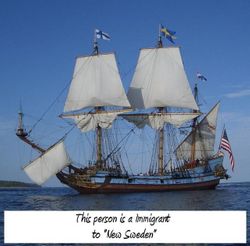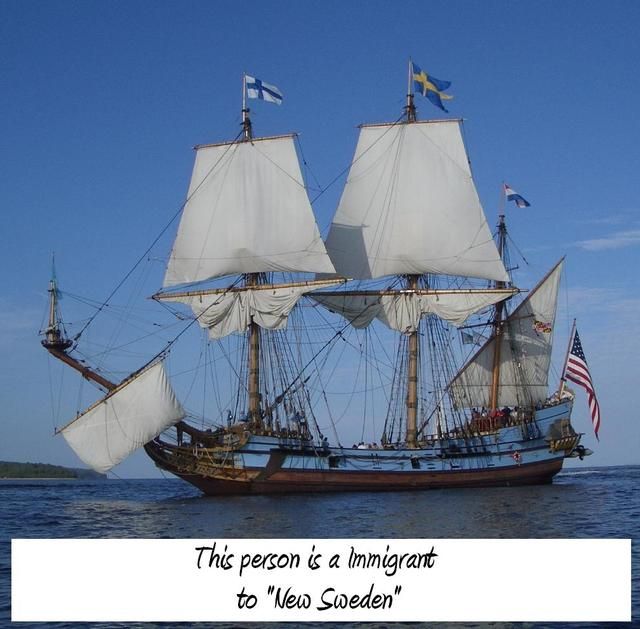Nils Andersson may never have seen the new land. He probably was one of many who died at sea. When the new freemen were gathered at Tinicum Island to sign pledges of allegiance to Governor Johan Rising, Nils Andersson's widow signed for the family. The two youngest children of Nils Andersson were Peter Nilsson and Michel Nilsson. They ultimately settled in the woods of Shackamaxon and adopted the surname of Lyckan, meaning "a glen or clearing in the woods," which was descriptive of their plantations.
by Dr. Peter Stebbins Craig
Fellow, American Society of Genealogists
Historian, Swedish Colonial Society,
originally published in Swedish Colonial News.
Nils Andersson may never have seen the new land. He probably was one of many who died at sea. When the new freemen were gathered at Tinicum Island to sign pledges of allegiance to Governor Johan Rising, Nils Andersson's widow signed for the family. The two youngest children of Nils Andersson were Peter Nilsson and Michel Nilsson. They ultimately settled in the woods of Shackamaxon and adopted the surname of Lyckan, meaning "a glen or clearing in the woods," which was descriptive of their plantations.
by Dr. Peter Stebbins Craig
Fellow, American Society of Genealogists
Historian, Swedish Colonial Society,
originally published in Swedish Colonial News.





